By Tommy Clarkson from the January 2014 Edition
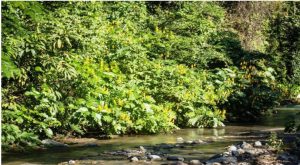 Senna alata
Senna alata
Family: Fabsceae
(Also known as a Candelabra Bush, Empress Candle Plant, Candletree, Christmas Candle, Emperor’s Candlesticks, Empress Candle Plant, Popcorn Senna, Candelillo, Ringworm Bush or Acapulco)
Around here, for all intents and purposes, this is the veritable, “ubiquitous wild bush of magnificence” while in some other locales it is considered an evasive pest! We see them regularly in ditches, along streams and out in the fields during our treks of exploration in search of new plants for the gardens.
When looking at these somewhat dazzling flowers, one has but to barely imagine them as fat yellow candles even sporting a flame! It is uncommon for a single species to be so naturally widespread but these certainly are, found thriving in Africa, Southeast Asia, the Pacific Islands and tropical America.
In the bean family, this shrub has become a favorite and is now commonly cultivated and planted by many who, like us, enjoy their happy, year around blooms. These are atop terminal racemes (floral cluster inflorescence in which the flowers are borne on short stalks along a long main stem) with each flower comprised of five, obvate to nearly round petals of bright and brilliant orange or yellow. These flower clusters are made up of open flowers at the bottom and unopened flowers with waxy coverings at the top. Ultimately, these blooms give way to winged bean-like seedpods that are fifteen to twenty cm (6-8” long) providing yet more ornamental interest.
Growing to four meters (13 feet) in height, its leaves remind one of the cycad called a Cardboard Palm. As Robert Lee Riffle said, “The leaves are glorious enough to warrant cultivation for their sake alone.”
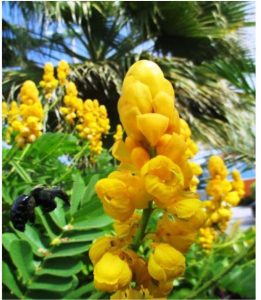
They are in the form of oblong leaflets (six to thirteen pairs per stem with each seven to twenty-one centimeters (three to eight inches) in length. Folding together at night, they are slightly notched at the tip and are even pinnately compound. Confirmed via scientific study, these leaves are laden with chrysophanic acid and can be used to treat ringworm and other fungal skin infections. In the Philippines it is a common ingredient in soaps, shampoos and lotions.
Additionally found in the Senna alata is saponin a laxative which also expels intestinal parasites. The boiled leaves are used to treat high blood pressure in Africa. In Saint Lucia its leaves are crushed with those of the Kasialata and placed in water as a bathing cure for itchy skin. Beyond the previously mentioned treatment of skin diseases, in South America, it is used to treat stomach problems, fever and asthma, as well as snake bite and certain venereal diseases.
Loved by bees, butterflies and birds, the Candlebush likes sunny, well draining soil and can grow up to an altitude of 1,200 meters (3,937 feet). It has no serious insect or disease problems and another plus to this plant is that its roots add nitrogen to the soil!
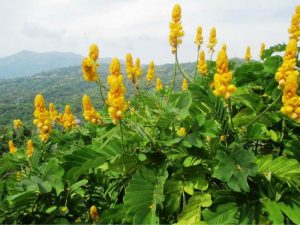
Attractive to Sulfur Butterflies, the Candlebush may occasionally be defoliated by their caterpillars. Worry not and don’t run for toxic chemicals. This is merely Nature’s way of pruning, is not harmful to your plant and birds find those caterpillars quite the juicy delicacy!
If enough space is available, it looks spectacular in a mass planting or can be used in patio containers or tubs. We have but one showcased as a specimen plant on our second terrace not yet open to the public, but clearly visible from our entrance below the Calle Terrace across the street. Its cheerful blooms fairly shriek to be seen as they loom over purple and green Moses in the boat plants between a Buccaneer Palm and the earlier mentioned Cardboard Palm.
It is short lived perhaps three years so, if you enjoy it, be prepared to replant! As a result of its fast growth, folks up north sometimes use it as an annual.
Want to grow some of your own from seeds? If so, first harvest some of those weird looking pods and dry them for four to six months. Then, pop open them open, soak the seeds overnight in warm water and plant. Not all that difficult is it?
Some still call/classify this shrub as a Cassia alata and as a result don’t be surprised if you see such a name in some nurseries or retail outlets. But, regardless of what you call it one of its many common names or either Latin designation if you’ve the right location, its brash and blaring brightness can, most certainly add color to your yard, garden or patio.
For back issues of “Roots”, gardening tips, tropical plant book reviews and videos of numerous, highly unique eco/adventure/nature tours, as well as memorable “Ultimate Experiences” such a Tropical Garden Brunches and Spa Services, visit www.olabrisagardens.com .”
Download the full edition or view it online
—
Tommy Clarkson is a bit of a renaissance man. He’s lived and worked in locales as disparate as the 1.2 square mile island of Kwajalein to war-torn Iraq, from aboard he and Patty’s boat berthed out of Sea Bright, NJ to Thailand, Germany, Hawaii and Viet Nam; He’s taught classes and courses on creative writing and mass communications from the elementary grades to graduate level; He’s spoken to a wide array of meetings, conferences and assemblages on topics as varied as Buddhism, strategic marketing and tropical plants; In the latter category he and Patty’s recently book, “The Civilized Jungle” – written for the lay gardener – has been heralded as “the best tropical plant book in the last ten years”; And, according to Trip Advisor, their spectacular tropical creation – Ola Brisa Gardens – is the “Number One Tour destination in Manzanillo”.
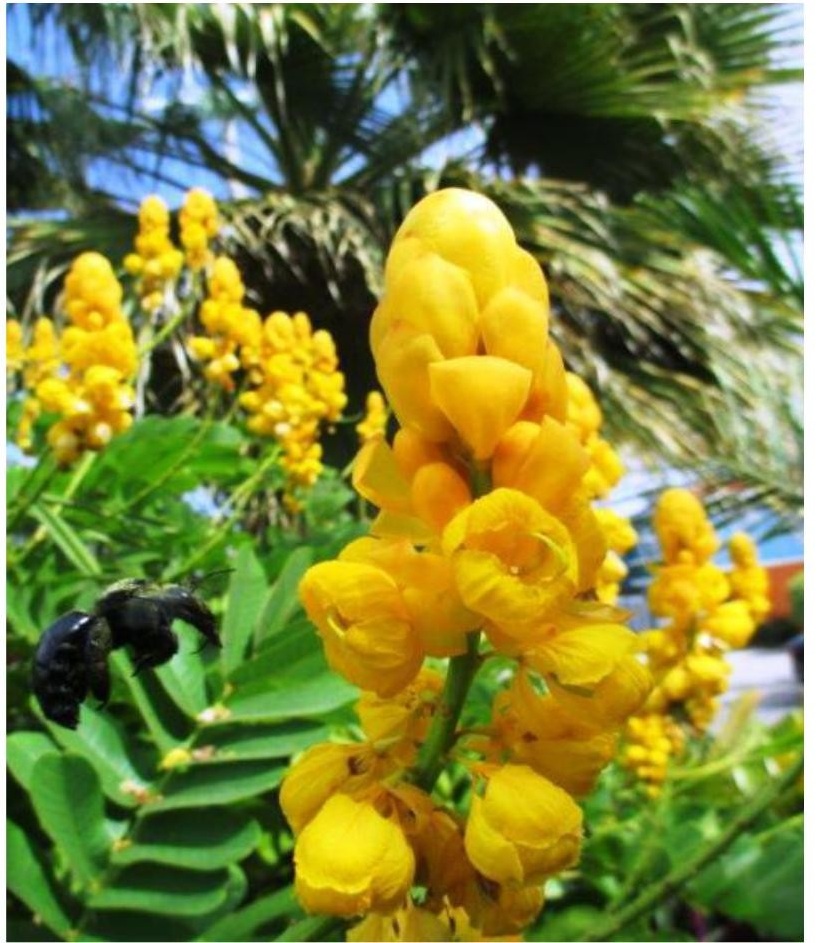


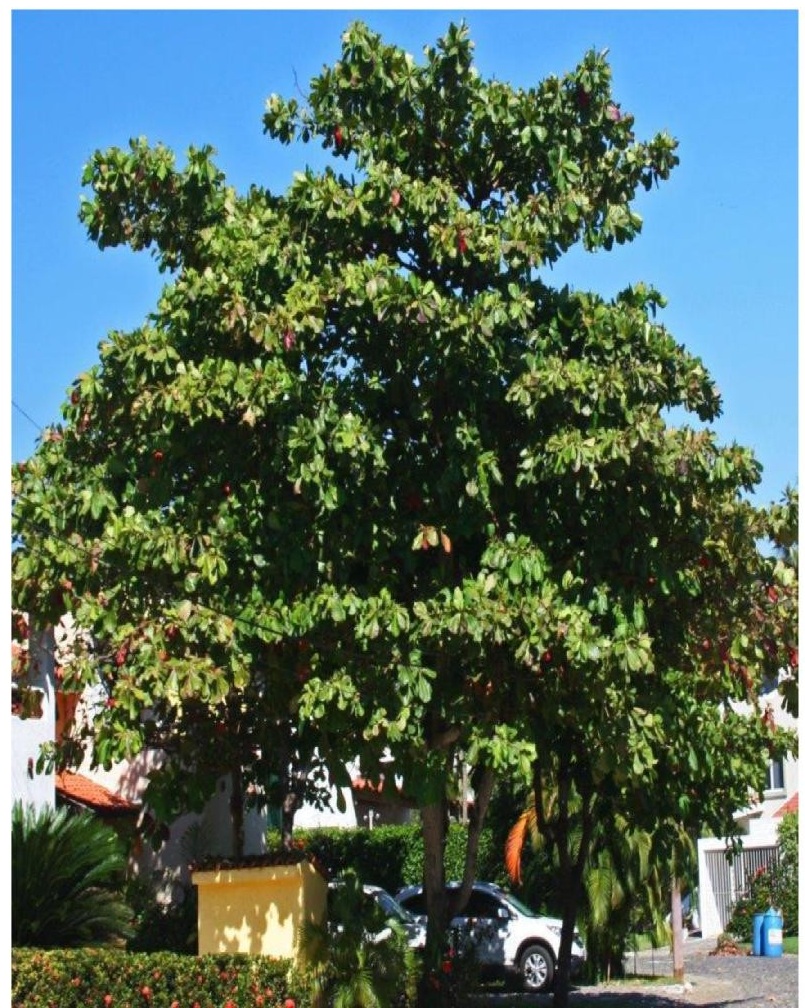

You must be logged in to post a comment.